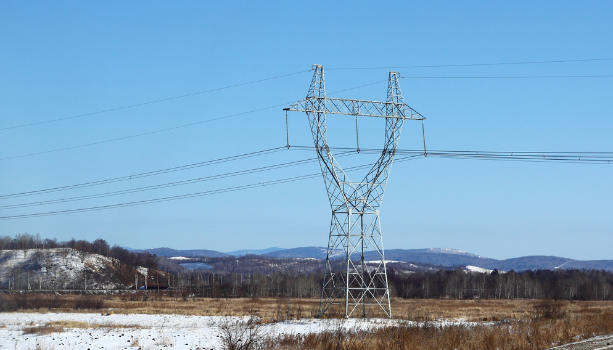Why Smart Grid Security Is Crucial for an Economy
Cyberattacks on Electricity Infrastructure
Electricity is fundamental to any economy. Despite being taken for granted, a power outage for just a few hours can severely impact all social and economic activities by disrupting all communications, transportation systems, businesses, banks, schools, and hospitals, leading to billions of dollars in losses. Due to its cruciality, electricity infrastructure has always been a highly attractive target for hostile states.
Traditionally, governments have always made the physical protection of power grids a crucial component of strategic defense, ensuring that power supply would not be disrupted in case of war. Yet, today, the physical protection of power grids have become less of a focus, whereas cyber protection became the most crucial task for safeguarding power supply.
The reason behind this shift from physical to cyber risk is that power grids around the world have become increasingly modernized, digitalized, and connected. A modernized power grid is commonly referred to as the smart grid.
What is the Smart Grid?
In a conventional power grid, a centralized power plant generates electricity, then sends it in one direction to the users via the transmission and distribution system. As a result, electricity needs to travel long distances before reaching an end-user. Real-time monitoring of electricity flow is not possible because there are no sensors and software components. A number of manual reporting systems are used instead to track its conditions for post hoc analysis.
In contrast to the conventional grid, a smart grid operates on a set of decentralized power generating stations that are connected in a network-like structure. The smart grid allows for bidirectional electricity and information flow, so that not only does electricity flow from the power generating stations to the users, but also vice versa, from users back to a network of localized power supply stations. These smaller power supply stations are in place to diversify power supply and optimize the electricity’s travel routes. Since power resources can be located closer to the users, energy lost during transmission and distribution can be significantly reduced.
Key Components of the Smart Grid and Their Cybersecurity Risks
1. Sensors
A smart grid contains thousands of sensors with internet connectivity. These sensors are usually attached to equipment like power lines and transformers, providing real-time information such as local weather conditions, power line temperature, and more.
Cybersecurity Risk. Hackers could break into the sensors and impair their ability to pick up information, hence interfering with the real-time monitoring system. Attackers could also manipulate the data collected by the sensors so that false information would be sent towards the central management system.
2. Central Management System
After the sensors pick up information from specific locations of the smart grid, the information gets transferred to a central management system that calculates these data to determine the power lines’ carrying capacity.
Cybersecurity Risk. When the central management system calculates the compromised false information sent from the sensors, incorrect results would be generated. Attackers could also break into the system altogether to impair its calculation capabilities.
3. Power Resources Allocator
Having determined the real-time capacity of the power lines, an allocator is used to compute the optimized path for the power to flow from the supply stations to each user. It identifies the nearest available power supply station for each user and sends it to them immediately, reducing energy loss during transmission and distribution. Additionally, this monitoring and allocation process allows the smart grid to automatically react to any abnormal conditions, allowing it to accurately isolate network failure and protect the infrastructure. This automated process helps the smart grid heal itself in cases of emergency without the need for human intervention.
Cybersecurity Risk. When the power resources allocator is compromised, hackers could freely control the electricity flow and cause large-scale power outages. This was the case five years ago in 2015, when the first-ever successful cyberattack on a smart grid took place in Ukraine. The attackers manipulated the electricity distribution of the grid and caused a blackout that impacted over 230,000 residents in late December, leaving tens of thousands of people freezing in the cold for up to six hours.
4. Smart Meters
On the users’ side, every household and commercial user is equipped with a smart meter that automatically detects and tracks the amount of electricity used in real-time and charges the user with the respective price. With the smart meter, users no longer have to pay an estimated usage bill.
Cybersecurity Risk. Attackers could inject false information into the smart meters to interfere with the pricing system, leading to financial loss and service disruptions for the energy provider. They could also gain access to the users’ personal data for phishing scams and identity theft.
Penta Security’s Smart Grid Security Solution
Penta Security offers a comprehensive smart grid security solution that solves the issue at its core — by ensuring data integrity.
To secure the power supply system, Penta Security’s smart grid security solution provides strict authentication and access control measures to prevent unauthorized access. With two decades of experience in data encryption technology, Penta Security ensures the integrity of the data processed and transmitted throughout the smart grid.
To secure the electricity billing system, Penta Security’s public key infrastructure (PKI) provides secure authentication for the smart meters. Its database encryption system also protects the personally identifiable information (PII) stored in these meters.
To learn more about Penta Security’s smart grid security solution, click here.
Check out Penta Security’s product lines:
Web Application Firewall: WAPPLES
Database Encryption: D’Amo
Identity and Access Management: ISign+
Car, Energy, Factory, City Solutions: Penta IoT Security
